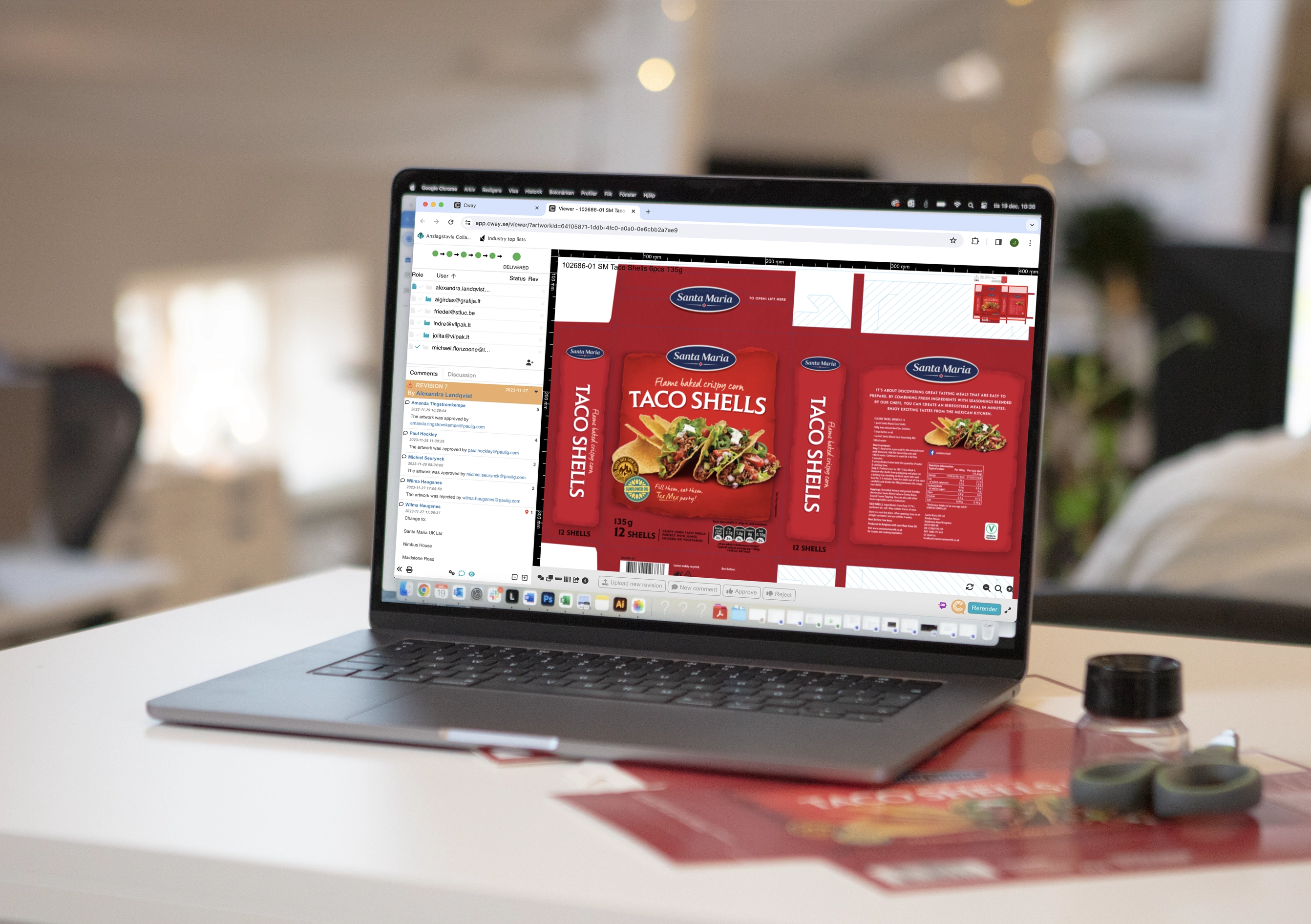11 benefits of online proofing software
Given the whirlwind nature of product launches, where timing is critical and perfection is imperative, ensuring your artwork proofing process is...
7 min read
Joanna Gränström
:
2024-02-07 08:33

Packaging artwork management is the process of overseeing a brand owner’s packaging designs over time. Think of it as the technical cousin of design-on-pack - always present at family dinners but not as charismatic and flamboyant as design. It's more of a strategic and practical blend of an analyst and doer. While he may not be the center of attention, he is essential for getting things done.
Table of Contents
Imagine this: you're on a mission to revitalize a specific category in your product assortment, encompassing about 200 products. You start the process by engaging your design agency, focusing primarily on bringing out the essence of the top 10 bestsellers. After some presentations, iterations and discussions, you choose a standout design and spend a few weeks refining it.
Upon reaching the sign-off stage, you face a recurring dilemma. While you appreciate the agency for their cutting-edge and market-reaching designs, their delivery and implementation processes are messy and drawn-out. You reflect on past challenges:
This is where the previously mentioned strategic and practical cousin comes in as the clear antidote to chaos. Things can be managed differently—efficiently, systematically, quickly, and without you in the middle. That's the essence of packaging artwork management.
Now, picture this: you contact your packaging artwork agency, merely cc'ing them the brief as you email it to the design agency. An adept packaging artwork partner will understand the necessary steps, execute them, and assume responsibility for both the progress and the outcome:
This is the approach taken by Collabra, supported by our dedicated, skilled team, well-documented methodologies, and Cway, our packaging artwork management software. Our nearly 20-year history of strategic and operational artwork management, handling thousands of artworks for some of the most prominent and demanding Scandinavian brands, has established industry best practices.
Optimal packaging artwork management necessitates strategic and operational knowledge, a structured process, and specialized packaging artwork management software. This combination ensures that any project, regardless of size, places minimal strain on you and your team while being executed securely, promptly, and cost-effectively.
Let's delve into each of these aspects:
Packaging artwork management demands expertise in both design-related aspects, such as packaging graphic design, design architecture, and brand identity, but also the packaging itself – substrate and print specifics, and regulatory compliance. It also benefits from the insights of experienced project managers and coordinators who know what to ask and when to pose their questions. Skilled experts understand the principles of effective packaging design, typography, color theory, and print production techniques specific to packaging.
A structured process is crucial to ensure consistency, quality, and compliance in packaging artwork management. Here are the key steps involved:
A packaging artwork management system plays a pivotal role in streamlining and automating various stages of the process. Here's how it supports the process:
In conclusion, while there's a manual approach, best practices offer a more efficient method. Packaging artwork management is a complex and crucial process that demands expertise, a well-defined process, and the support of specialized packaging artwork management software. By integrating these elements, companies can ensure that their packaging is not only visually appealing and correct, but also that the team survives the project and have plenty of energy to engage in the next. This, in turn, contributes to a positive brand image and product success in the marketplace.
Packaging artwork is the combined result of esthetically appealing design and selling and informative content, forming a digital file for prepress and subsequently print on packaging.
Packaging artwork typically include:
A best-practice, ready-for-print artwork is typically graphically and digitally cleaned up to avoid prepress issues, colors are specified using relevant printing standards and it’s well reviewed and approved using a software that provides clarity into detail, comparison options and maximum security.
Artwork Management is a combination of processes, expertise and software, providing enhanced overall productivity and security by streamlining all work within the packaging artwork lifecycle, enabling efficient collaboration and minimizing manual tasks. Best-practice Artwork Management optimizes processes, resulting in time and cost savings, improved organizational capabilities and the creation and maintenance of consistent and precise branding on pack.
Examples of artwork management processes:
Updating current artwork:
Creating new artwork from master design:
The “art” part of packaging artwork refers to the creative process as well as the outcomes achieved during the development – the packaging design. The primary goal of the design is to influence customer purchasing decisions and foster brand loyalty, ultimately resulting in repeating purchases.
An assortment design typically includes:

Given the whirlwind nature of product launches, where timing is critical and perfection is imperative, ensuring your artwork proofing process is...

In the fast-paced world of design and product development, creating effective design feedback loops is essential. It's not merely about refining...

In the ever-evolving world of packaging design, the line between form and function blurs, transforming ordinary containers into extraordinary...